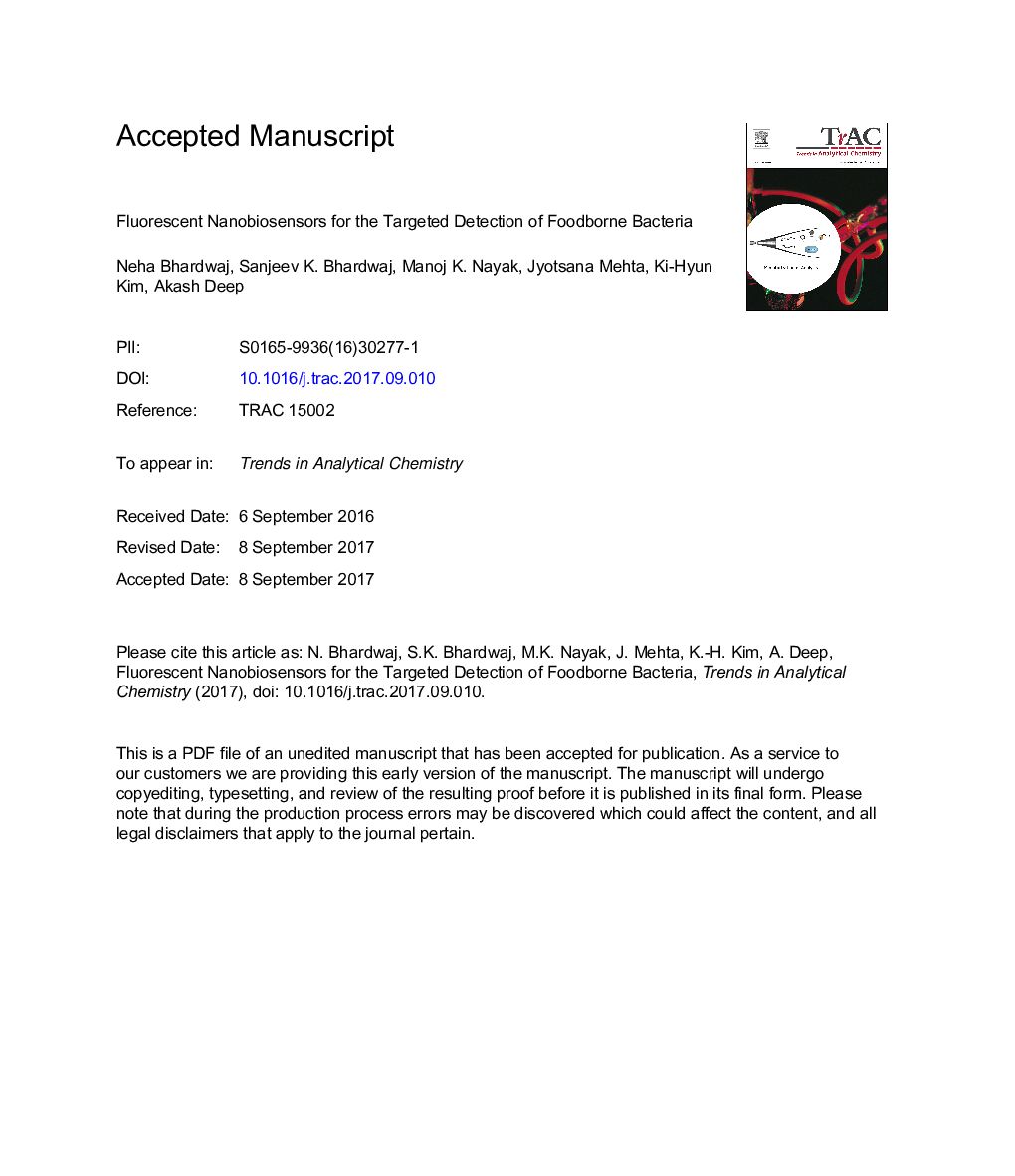| Article ID | Journal | Published Year | Pages | File Type |
|---|---|---|---|---|
| 7688048 | TrAC Trends in Analytical Chemistry | 2017 | 64 Pages |
Abstract
Foodborne diseases caused by bacterial pathogens are severe threats to human health. Conventional culture based microbiologic methods for the analysis of bacterial contamination in food products are laborious, time consuming and require specific skills. Immunologic and polymerase chain reaction (PCR)-based molecular methods are also costly, lack specificity, and may yield false results. As outlined in this review, fluorescent nanobiosensors have now become effective alternative tools for rapid and routine detection of foodborne bacteria. We provide an overview of the use of different fluorescent nanomaterials in the development of nanobiosensors with special emphasis on underlying detection principles, sensitivity, specificity, and their capability of multiplexed analysis. In summary, the diverse nanomaterials used for bacterial detection are critically analyzed with respect to their advantages and limitations for future applications in the diagnosis of foodborne bacteria.
Related Topics
Physical Sciences and Engineering
Chemistry
Analytical Chemistry
Authors
Neha Bhardwaj, Sanjeev K. Bhardwaj, Manoj K. Nayak, Jyotsana Mehta, Ki-Hyun Kim, Akash Deep,
